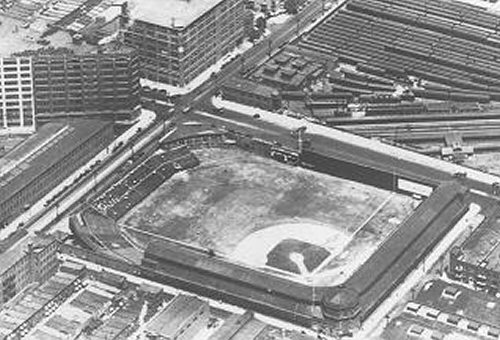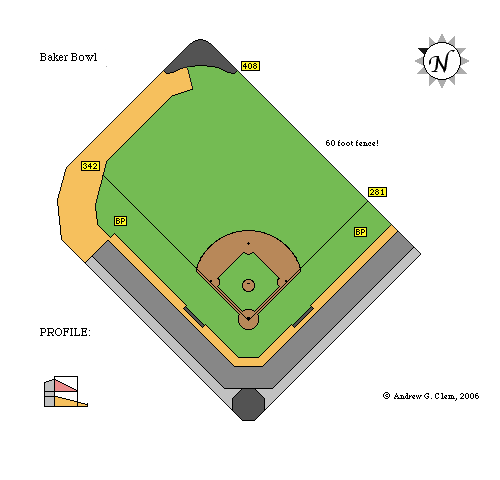MORE: All-time single-season Phillies team
On the occasion of our unveiling of the Phillies all-time single-season team (see link above), let us take a quick look back at the most unusual ballpark they first called home. Said unusual ballpark was the Baker Bowl (a pretty great name, by the way).
The Baker Bowl was first constructed way back yonder in 1887, but it was soon thereafter rebuilt after a fire and thus became the first "reinforced steel and concrete" modern baseball venue. Using those construction materials not only made for a sturdier structure but also yielded a ballpark that, you know, didn't burn down quite so easily. The Phillies called it home until 1938.
The thing about the Baker Bowl is that, like a lot of early ballparks, it was wedged into the existing urban geography (as opposed to razing buildings and rerouting streets in order to make room for it), which led to, as you'll soon see, a rather unconventional layout. Here's an aerial sense of things ...

(Image: Big Bad Baseball)
That's Broad Street beyond the right field wall, and largely because of the uncompromising presence of Broad you had these rather bizarre dimensions ...

(Image: Clem's Baseball Blog)
Well then. Homers to center and left were reasonably hard-won, but, yes, it's 281 feet down the line in right. To be fair, somewhat offsetting the coziness was this colossus of a right-field wall ...

(Image: Wikipedia)
That's 60 feet of primo ad space right there! And know that the Phillies are a clean-smelling lot.
Even so, left-handed hitters like Chuck Klein squarely benefitted from the Baker Bowl layout, and, in turn, right-handed pitchers surrended fly balls at their own peril. In Klein's MVP season of 1932, for instance, he hit 29 of his 38 homers at the Baker Bowl. By the same token, Grover Cleveland Alexander's success with the Phillies becomes all the more remarkable.
Finally, a brief digitized walking tour ...
The Yankee Stadium right-field porch looks on in smoldering envy.

















